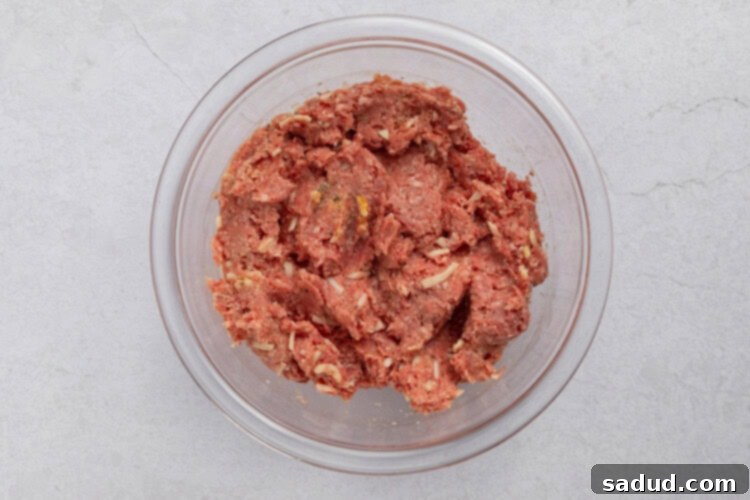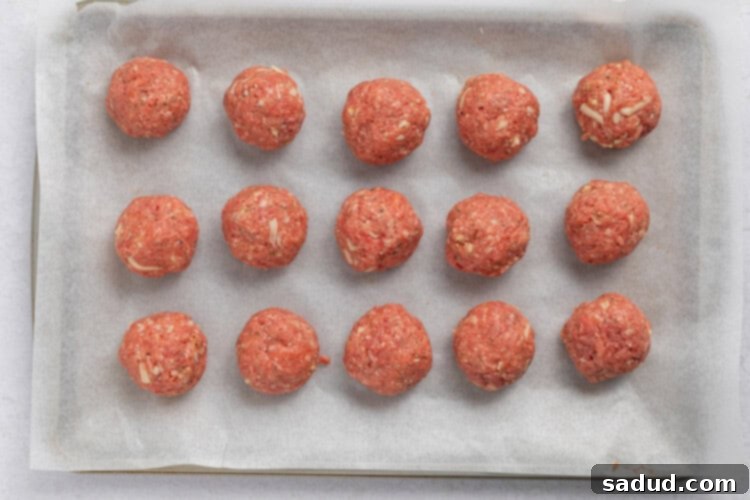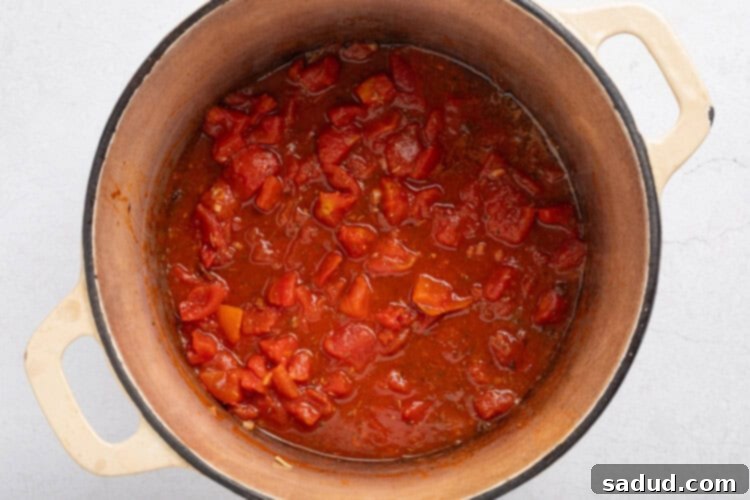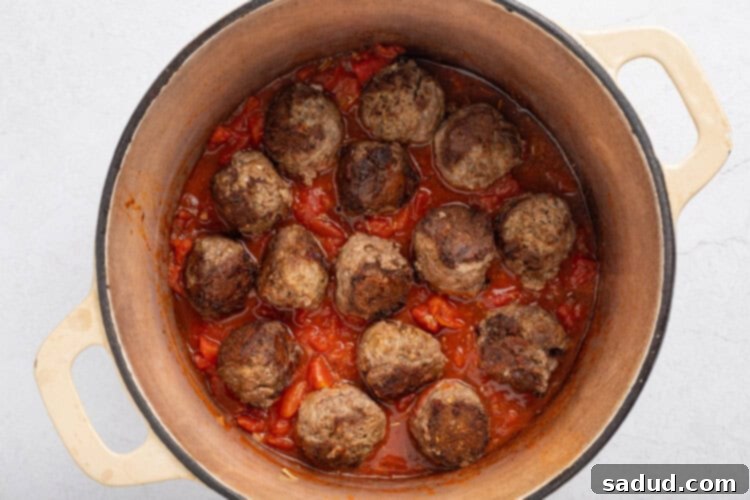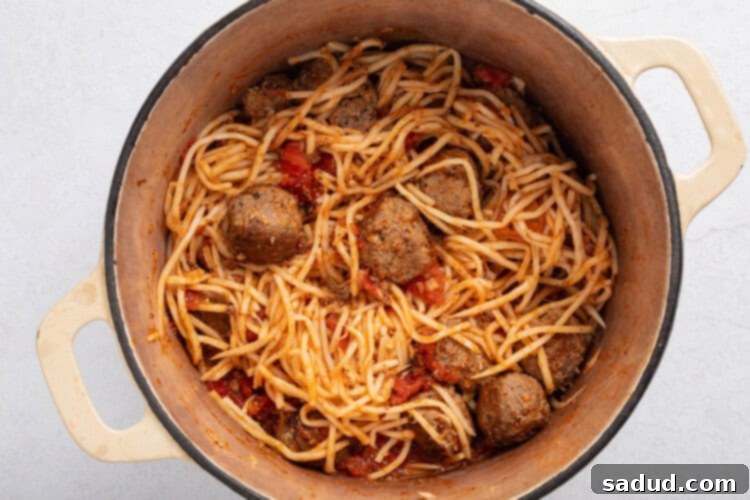Delicious Keto Spaghetti and Meatballs: A Low-Carb Comfort Food Revolution
Craving a classic, hearty Italian meal but sticking to your low-carb lifestyle? Look no further! This keto spaghetti and meatballs recipe transforms beloved comfort food into a healthy, guilt-free delight. We’ve reinvented traditional Italian meatballs, making them incredibly tender and packed with flavor, thanks to a thoughtful blend of extra cheese and a hint of heavy cream, all while keeping them perfectly low-carb. The star of our low-carb pasta dish is Palmini noodles, which are tossed in a wonderfully simple yet utterly delicious sauce, culminating in an easy, satisfying keto meal that your whole family will love.
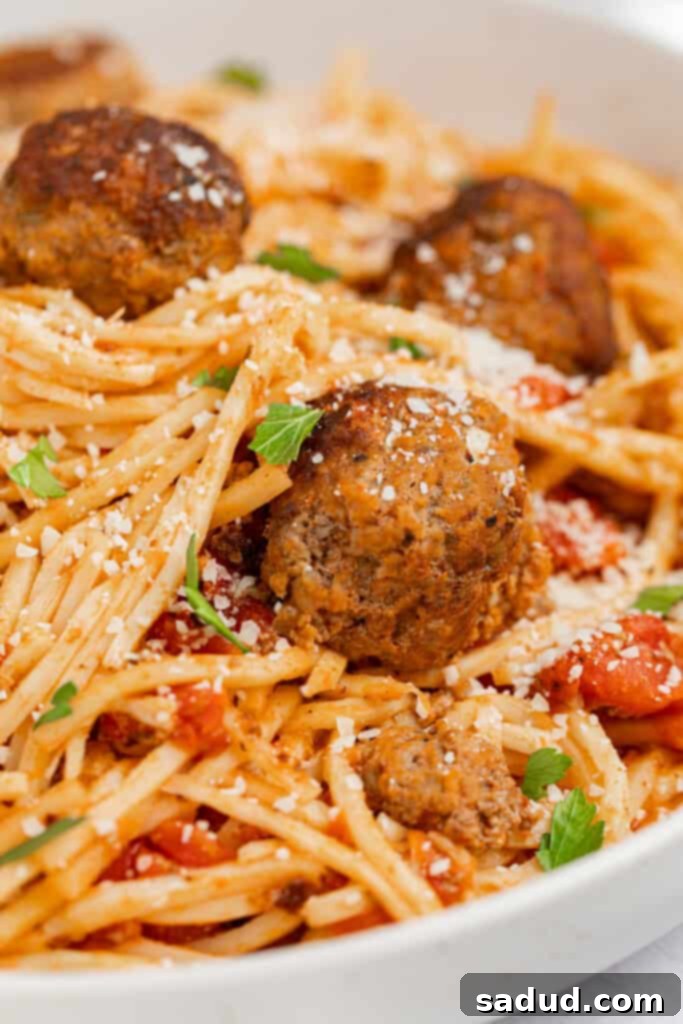
Why This Keto Spaghetti and Meatballs Recipe is a Must-Try
This recipe isn’t just a keto-friendly alternative; it’s a culinary experience that stands on its own. Here’s what makes this low-carb spaghetti and meatballs truly exceptional:
- Unbelievably Tender and Flavorful Meatballs: Forget dry, bland meatballs! We’ve meticulously crafted these meatballs to be incredibly juicy and bursting with authentic Italian flavor. By **removing the carb-heavy breadcrumbs and incorporating both parmesan and mozzarella cheese**, along with a touch of heavy cream, we achieve a texture and richness that makes these keto meatballs absolutely irresistible. The cheese not only binds the meat but also infuses it with a savory depth, while the cream ensures a moist, melt-in-your-mouth consistency.
- Effortlessly Simple, Delicious Sauce: Good spaghetti sauce doesn’t need to be complicated. Our recipe features a remarkably straightforward, **four-ingredient sauce** that delivers big on taste without the fuss. It’s a testament to the power of quality ingredients: ripe diced tomatoes, fragrant minced garlic, and a couple of well-chosen spices. This minimalist approach allows the natural sweetness of the tomatoes and the aromatic garlic to shine, creating a sauce that’s both easy to prepare and profoundly delicious.
- Satisfying Palmini Noodles for a Perfect Keto Experience: One of the biggest challenges on a keto diet is finding a pasta substitute that truly satisfies. Palmini noodles are a game-changer! Made from hearts of palm, these innovative, plant-based noodles closely resemble traditional spaghetti in both appearance and texture. They offer a delightful bite and absorb the rich flavors of the sauce beautifully. **This plant-based, low-carb spaghetti alternative is incredibly satisfying, nutritious, and a whole lot healthier** than conventional pasta, making it an ideal choice for anyone seeking a wholesome, keto-compliant meal without sacrificing that comforting spaghetti feel.
Key Ingredients for Your Keto Spaghetti Success
Crafting the perfect keto spaghetti and meatballs starts with understanding and selecting the right ingredients. Here’s a closer look at the stars of this recipe:
Ground Beef – For our delectable meatballs, I’ve opted for simplicity and used just ground beef. This provides a robust flavor foundation that pairs beautifully with the rich sauce. However, if you’re looking to add another layer of flavor and moisture, you can certainly experiment with a blend of meats. A common practice in Italian cooking is to use a mix of ground beef and ground pork. If you choose to go this route, simply combine 1/2 pound of ground pork with 1/2 pound of ground beef. This blend often results in even juicier and more flavorful meatballs. When selecting ground beef, aim for a lean-to-fat ratio between 80/20 and 90/10 for the best balance of flavor and tenderness without excessive grease.
Diced Tomatoes – The base of any great spaghetti sauce is quality tomatoes. In this recipe, I’ve chosen diced canned tomatoes for their texture and ease of use. They break down just enough to create a rich, rustic sauce, yet still offer small pieces of tomato for added body. While diced tomatoes are my preference, feel free to use whole peeled or crushed canned tomatoes in their place, depending on your desired sauce consistency. Whole tomatoes can be crushed by hand for a chunkier sauce, while crushed tomatoes will yield a smoother result. The most crucial aspect, regardless of the type, is to ensure they are **low in carbs and sugar, with no added sugars**. Many canned tomato products contain hidden sugars, so always check the nutrition label carefully. If you’re unable to find sugar-free canned tomatoes, a fresh alternative is to use 2 cups of finely chopped fresh tomatoes. Keep in mind, however, that fresh tomatoes may yield a slightly less intense flavor compared to their canned counterparts due to differences in ripeness and processing.
Palmini Noodles – The revolutionary component that makes this dish truly keto-friendly is Palmini noodles. Derived from hearts of palm, a vegetable harvested from the inner core of certain palm trees, these unique noodles are surprisingly delicious and an excellent low-carb spaghetti substitute. Hearts of palm are naturally low in carbohydrates, making Palmini noodles an ideal choice for the keto diet. You’ll typically find Palmini noodles conveniently packaged in a can or a sealed bag at most major grocery stores in the canned goods or international foods aisle. Before incorporating them into your sauce, it’s absolutely essential to **drain and rinse your Palmini noodles thoroughly**. This step helps remove any residual brine and significantly improves their texture and taste, ensuring they seamlessly integrate into your flavorful keto spaghetti.
Maximizing Your Keto Spaghetti Experience: Expert Tips
Even the simplest recipes can benefit from a few expert insights. Follow these chef’s tips to ensure your keto spaghetti and meatballs turn out perfectly every time:
- Prevent Overcrowding When Searing Meatballs: When it comes to searing your meatballs, resist the urge to cram them all into the pot at once, even if your pot is generously sized. If your pot isn’t large enough to accommodate all meatballs in a single layer with ample space between them, **sear them in two or three batches instead.** For this recipe, I typically find two batches to be ideal. It is very important that you don’t overcrowd your pot, otherwise your meatballs will steam rather than sear, preventing them from developing that crucial golden-brown crust and deep, savory flavor. Overcrowding also increases the likelihood of them sticking together, making them harder to handle.
- Customize Palmini Noodle Texture: Palmini noodles offer a unique texture that some find perfectly acceptable straight from the can (after rinsing). This keto spaghetti recipe does not strictly require cooking the Palmini noodles before adding them to the sauce and meatballs, which makes for a quicker preparation. However, **if you prefer softer noodles that are closer in consistency to traditional pasta, you can cook the Palmini noodles in boiling water for 5-10 minutes before using them in this recipe.** This extra step will tenderize them further, offering a more familiar pasta-like mouthfeel. Experiment to find your preferred texture!
- Elevate with Fresh Garnishes: The final flourish can truly transform your dish. **I highly recommend finishing off this keto spaghetti with some extra freshly grated parmesan cheese and a sprinkle of fresh parsley or basil!** The additional parmesan cheese not only adds a delicious salty, umami flavor but also boosts the fat content, making the macros even better suited for the ketogenic diet. Fresh herbs like parsley or basil provide a beautiful pop of color and a bright, aromatic freshness that cuts through the richness of the meatballs and sauce, adding a gourmet touch to the overall dish.
The Benefits of Choosing Keto Spaghetti and Meatballs
Beyond being incredibly delicious, this low-carb spaghetti and meatballs recipe offers a wealth of benefits, especially if you’re following a ketogenic or low-carb lifestyle. By swapping traditional wheat pasta for Palmini noodles and crafting carbohydrate-conscious meatballs, you can enjoy this comforting meal without the typical carb load. This helps in maintaining ketosis, promoting steady blood sugar levels, and supporting weight management goals. The dish is rich in protein and healthy fats, which contribute to satiety, keeping you fuller for longer and reducing cravings. Furthermore, hearts of palm, the base of Palmini noodles, are a good source of fiber, aiding in digestive health. This recipe proves that you don’t have to sacrifice flavor or satisfaction when making healthier dietary choices. It’s a perfect example of how classic dishes can be adapted to fit a nutritious, low-carb framework.
Delicious Variations and Customization Ideas
One of the best things about comfort food is its versatility. While this keto spaghetti and meatballs recipe is perfect as is, you can easily adapt it to suit your preferences or what you have on hand:
- Protein Alternatives: Instead of or in addition to ground beef, consider using ground turkey, ground chicken, or a mix of ground beef and Italian sausage (ensure it’s sugar-free and low-carb). Each will impart a slightly different flavor profile to your keto meatballs.
- Spice it Up: For those who love a bit of heat, add a pinch of red pepper flakes to the meatball mixture or the sauce. You can also incorporate other dried herbs like oregano or a touch of smoked paprika for a deeper flavor.
- Veggies in the Sauce: Boost the nutritional value and complexity of your sauce by adding finely diced onions, bell peppers, mushrooms, or zucchini. Sauté them with the garlic before adding the diced tomatoes.
- Cheesy Goodness: While parmesan and mozzarella are used, feel free to experiment with other keto-friendly cheeses in the meatballs, such as provolone, or even a sharp cheddar for a different kick.
- Other Low-Carb Noodles: If Palmini noodles aren’t available or you prefer another option, zucchini noodles (zoodles), spaghetti squash, or even Shirataki noodles (konjac noodles) can be used as alternatives for your low-carb spaghetti. Just be sure to prepare them according to their specific instructions.
Serving Suggestions and Meal Prep
This keto spaghetti and meatballs is a wholesome meal on its own, but you can enhance the dining experience with a few thoughtful additions:
- Classic Pairings: Serve alongside a fresh, crisp green salad with a simple vinaigrette to add freshness and counterbalance the richness of the dish.
- Keto Garlic Bread: For that ultimate Italian experience, pair it with a slice of keto-friendly garlic bread. There are many recipes available online using almond flour or fathead dough.
- Storage: Leftovers store beautifully! Allow the spaghetti and meatballs to cool completely, then transfer them to an airtight container. They will keep well in the refrigerator for up to 3-4 days.
- Freezing: This dish is also freezer-friendly. For best results, freeze the meatballs and sauce separately from the Palmini noodles if possible, as the noodles can sometimes change texture slightly upon freezing and reheating. Store in freezer-safe containers for up to 2-3 months. Thaw in the refrigerator overnight before reheating gently on the stovetop or in the microwave.
- Reheating: Reheat leftovers on the stovetop over medium-low heat, stirring occasionally, until warmed through. You may add a splash of water or broth if the sauce seems too thick.
Common Questions About Keto Spaghetti and Meatballs (FAQ)
- Can I use frozen meatballs? While you can use pre-made keto frozen meatballs to save time, this recipe specifically highlights the superior flavor and texture of homemade meatballs. If using frozen, ensure they are sugar-free and low-carb, and adjust cooking times accordingly.
- Are Palmini noodles really low carb? Yes! Palmini noodles are made from hearts of palm and typically contain very few net carbs, making them an excellent choice for a ketogenic diet. Always check the specific brand’s nutritional information.
- Can I make this recipe dairy-free? To make it dairy-free, you would need to omit the heavy cream, parmesan, and mozzarella from the meatballs. You could experiment with a dairy-free cream alternative and nutritional yeast for a cheesy flavor, though the texture and taste will differ.
- How can I make the sauce thicker? If you prefer a thicker sauce, you can let it simmer uncovered for a longer period to reduce. Alternatively, you can add a small amount of a keto-friendly thickener like xanthan gum (start with 1/4 teaspoon and add more slowly) during the last few minutes of cooking.
- Is this recipe suitable for meal prep? Absolutely! This keto spaghetti and meatballs recipe is fantastic for meal prepping. Make a large batch and divide it into individual portions for quick and easy low-carb lunches or dinners throughout the week.
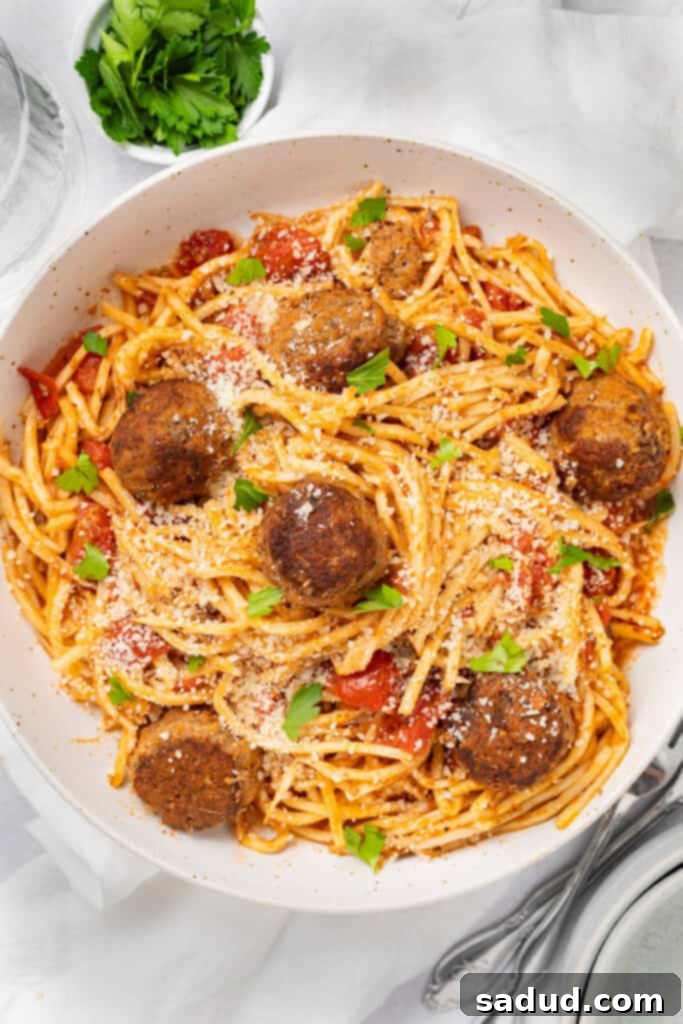
Other Keto Recipes You’ll Love
- Keto Flour Mix
- Keto Carbonara
- Cream Cheese Fat Bombs
- Keto German Chocolate Cake
- Keto Gumbo
If you loved this recipe as much as we did, don’t forget to leave us a review below. ★ Follow Easy Healthy Recipes on Pinterest, Facebook, and Instagram, too!
For more delicious recipes, visit our sister sites, 40 Aprons and Easy Cheap Recipes.

Keto Spaghetti and Meatballs
 Cheryl Malik
Cheryl Malik
Print
SaveSaved!
Ingredients
For the Meatballs
- 1 pound ground beef see Notes
- 1 garlic clove minced
- 2 tablespoons heavy cream
- ¼ cup freshly grated parmesan cheese see Notes
- ¼ cup freshly shredded mozzarella cheese
- 1 teaspoon Italian seasoning
- ½ teaspoon salt
- ¼ teaspoon black pepper
- 1 tablespoon olive oil
For the Sauce
- 2 garlic cloves minced
- 1 14.5-ounce can diced tomatoes no sugar added
- 1 teaspoon Italian seasoning
- ½ teaspoon salt
For the Spaghetti
- 24 ounces Palmini noodles see Notes
Equipment
-
Large bowl
-
Large pot
Instructions
-
In a large bowl, combine the ground beef, minced garlic, heavy cream, parmesan cheese, mozzarella cheese, Italian seasoning, salt, and black pepper. Mix gently until just combined, being careful not to overmix, as this can make the meatballs tough.

-
Using a tablespoon or a small cookie scoop, measure out about 2 tablespoons of the meat mixture per meatball. Roll each portion into a compact ball using the palms of your hands. Set aside on a plate.

-
Once all the meatballs are prepped, add olive oil to a large pot or Dutch oven and heat over medium heat. Working in batches to avoid overcrowding, sear the meatballs for 2-3 minutes per side until nicely browned. Remove seared meatballs and set aside.

-
In the same pot (with any remaining drippings for extra flavor), sauté the minced garlic over medium-low heat for 2 minutes until fragrant. Add the diced tomatoes, Italian seasoning, and salt. Stir well to combine all sauce ingredients.

-
Gently return the seared meatballs to the pot with the sauce. Cover the pot with a lid, reduce the heat to low, and let the sauce simmer for 15-20 minutes, or until the meatballs are cooked through and tender.

-
While the sauce simmers, thoroughly drain and rinse the Palmini noodles. Once the meatballs are cooked, remove the pot from heat and stir in the prepared Palmini noodles. Divide into equal portions and serve immediately, garnished with fresh parmesan and parsley/basil if desired.

Notes
- Ground Beef: For this recipe, you can use anywhere from 70% to 95% lean ground beef, depending on your preference for fat content. A higher fat content typically yields juicier meatballs. You can also substitute half a pound of ground pork for half a pound of ground beef for an even richer flavor.
- Parmesan Cheese: For the most authentic flavor and to avoid unnecessary carbs, we highly recommend buying a block of parmesan cheese and grating it yourself. Pre-grated cheeses often contain anti-caking agents and fillers which can add hidden carbohydrates.
- Palmini Noodles: While Palmini noodles are our top recommendation for their spaghetti-like texture and low-carb profile, feel free to use your favorite keto pasta alternative in this recipe. Zucchini noodles (zoodles) or spaghetti squash would also taste great as a low-carb substitute. Remember to adjust cooking times accordingly for other noodle types.
- Storage: Store any leftover keto spaghetti and meatballs in an airtight container in the refrigerator for up to 3-4 days. It reheats beautifully on the stovetop or in the microwave.
Nutrition Information
Number of total servings shown is approximate. Actual number of servings will depend on your preferred portion sizes.
Nutritional values shown are general guidelines and reflect information for 1 serving using the ingredients listed, not including any optional ingredients. Actual macros may vary slightly depending on specific brands and types of ingredients used.
To determine the weight of one serving, prepare the recipe as instructed. Weigh the finished recipe, then divide the weight of the finished recipe (not including the weight of the container the food is in) by the desired number of servings. Result will be the weight of one serving.

